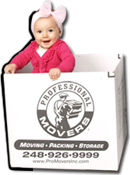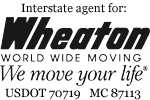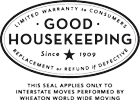Long distance moving can be a complicated process, however at Professional Movers.com we want to simplify the process and provide you with as much information as possible so you can make an informed and educated decision. Below you will find a table of contents, please feel free to review and contact our office if you have any questions.
Table of Contents
- The Long Distance Move Process in Four Phases
- Moving Reservations and Arrangements
- Hazardous Materials
- No Liability and Important Documents
- Identifying High Value Items Prior to Move
- Moving Appliances
- Moving Autos, Boats and Campers
- Partial or Split Deliveries
- Packing Preparation
- On Packing Day
- On Loading Day
- Before You Leave
- Upon Arrival at Your New Home
- Claims Procedure
- Quality Assurance
- Long Distance Moving Terminology
The Long Distance Move Process in Four Phases
The four phases of the relocation process have been created to fulfill the need for excellent communication throughout all aspects of a move. Through years of successfully servicing many customers, Professional Movers.com has developed this unique move management system that is recognized throughout the industry as the best customer service program available.
Initiation Phase
The first phase of the move process is the Initiation Phase. You will be assigned a move counselor to be your single point-of-contact throughout the entire move. Your counselor will gather all pertinent information as well as give you all their contact numbers and e-mail addresses, including a home or cell number to provide 24/7 access. Your counselor will also set an appointment with a certified moving consultant. During this appointment, your certified moving consultant will perform a free, in-house, no-obligation estimate, review the move process, and provide you with an introductory packet.
Pre-Move Phase
The next phase of your move is the Pre-Move Phase. Once you decide to move with Professional Movers.com your counselor will review your estimate and send you a revised estimate with any changes that have been discussed. At this time you will also be sent helpful destination information if requested. Your counselor will call to develop a move plan and confirm pack and load dates, third party services, if needed, and delivery dates. Your counselor will also follow up 24 hours prior to the scheduled pack day to advise you of the crew’s expected arrival time.
Critical Move Phase
Your counselor will make a “pack call” on each pack day and a “load call” on moving day to offer assistance, answer additional questions, and ensure that everything is proceeding as planned. Once the load call is completed, delivery address and destination telephone contact numbers are confirmed. The shipment will be closely monitored from the day of loading to the day of delivery (through the use of our Nextel communication system) to ensure our compliance with all agreed upon dates and commitments.
The Post-Delivery Phase
At the last phase of your move, an unpack call is made to confirm that the crew is there and to follow up with any additional questions you may have. During this call, the claims process is explained in greater detail if necessary. The post-move survey process is also explained. You will receive a Customer Service Survey in the mail from Wheaton Worldwide and a Destination Call by phone from Professional Movers.com shortly after your move has been completed. We use both these methods to gather customer feedback on our service quality levels and identify areas that may need improvement.
Moving Reservations and Arrangements
If you live in an apartment building there are certain arrangements that you may need to make in advance of the move. It is your responsibility to contact your building supervisor regarding the specific procedures for your building.
These arrangements may include, but are not limited to:
- Reserving elevators
- Obtaining parking permits for the moving van
- Certificates of Insurance/Property Management
Hazardous Materials
Professional Movers.com is forbidden by law to ship or store hazardous materials. We recommend you either give them away or arrange other means of transporting items including the following:
[TABLE=32]
No Liability Items & Important Documents
Professional Movers.com recommends you keep the following items with you or arrange other means of transporting the following list of items:
List of Items That Are Best To Transport Yourself
[TABLE=33]
Identifying High Value Items Prior to Move
Any household item that is worth $100.00 per pound must be noted on the High Value Inventory form. The form must be filled out and signed by you prior to loading. It is imperative that the driver receives the High Value Inventory Form prior to loading so that the proper measures can be taken to identify those items and prepare those items for safe shipment. Items that generally placed on the High Value Inventory Form are:
Examples of High Value Items
[TABLE=34]
Items That Need Special Consideration
[TABLE=35]
Moving Appliances
The following is a list of normal appliances and servicing they require:
[TABLE=36]
Moving Autos, Boats, and Campers
When transporting an auto, boat or camper separately from your Household Goods, the following guidelines need be followed:
- Have the vehicle ready for pick up. All removable items need to be taken out. Secure necessary items (spare, jack, etc) to prevent damage. Have a spare key for the driver.
- There will be an inspection before transit and at delivery. EXCEPTIONS NEED TO BE TAKEN AT DELIVERY AND MUST BE CALLED IN TO THE CARRIER WITHIN 24 HOURS FROM DELIVERY. CONCEALED DAMAGE MUST ALSO BE CALLED IN WITHIN 24 HOURS OF DELIVERY. DO NOT ARRANGE FOR DELIVERY IF YOU WILL NOT HAVE TIME FOR INSPECTION.
- Please provide a phone number where you can be reached during the Day of pick up and delivery.
Special Preparations & Tips
Professional Movers.com also suggests you take the following steps to prepare items for your move:
- Pre-pack all items that you are taking with you in transit. Mark these items and keep them in a separate area.
- When moving your personal computer, park the hard disk using the program that’s typically included on the diagnostic diskette. To protect the floppy disk drive, place a blank disk in the drive and close it. Always remember to back up important files.
- When moving CD player or computer CD-ROM, check the manuals for directions on securing the laser. Note that heat can warp compact discs.
- Remove ink cartridges from printers
- Plasma TV’s are not recommended for storage periods exceeding two months.
- Try to avoid putting electronic equipment, record collections, or CD’s in storage for long periods of time in extreme heat.
- Gas grills and barbecue grills that use coals should be cleaned out the day before the packers arrive.
- Lawn mowers and other gasoline engines must be emptied of oil and gas. Also, gas cans should be washed out to prevent fumes from damaging transported goods.
- Any item that is permanently affixed to the walls or ceilings must be taken down prior to packing, unless your company has authorized the service to be performed by a third party company.
- Items in the attic must be brought down by you prior to packing unless your company has authorized the charges for this service to be performed by the moving company.
- Make sure to remove shower curtain(s) and dry them thoroughly for packing.
- Disassembly and reassembly of swing sets, sky forts, storage sheds and other items of a similar nature are often considered additional services and provided by third party. Please discuss arrangements with your Professional Movers.com Coordinator. Professional Movers.com does not recommend disassembly of wooden playscapes during freezing weather due to the high risk of permanent damage.
Other Items of Consideration
The following is a list of items that require special handling:
List of Items That Are Best To Transport Yourself
[TABLE=37]
Partial or Split Deliveries
Partial or split deliveries can be provided to the destination metropolitan area, for an additional fee. If your shipment requires partial delivery to a location other than your destination address it is your responsibility to:
- Provide your Professional Movers.com Coordinator with the address(es), contact person and phone numbers.
- Advise the packers and the driver of the specific items that will be part of the split delivery for a separate inventory for destination.
- Complete the inventory checklist upon delivery as your items are unloaded.
Packing Preparation
Listed below are some helpful preparation tips for you to prepare for your packing day:
- We ask that you are available at 8:00 am. Plan on being available for up to 8-10 hours each day. You will receive a call the day before to advise the crew’s estimated time of arrival.
- Detach any items that are attached to the walls. For example: drapery rods, towel bars, etc. The packers will remove pictures from the wall and pack them.
- Remove sheets and blankets from all beds. (This may be done on loading day if you will remain overnight).
- Dispose of all flammable items.
- Remove all liquid and fragile items from dresser drawers.
- Wash out garbage cans and grills.
- Disconnect all water hoses and drain them.
- Empty refrigerator of all contents. If your household goods are going into storage, we suggest placing baking soda, activated charcoal or fresh coffee grounds placed in an old stocking which will help to eliminate moisture.
- Separate items that you will be taking with you and place them in a designated area to prevent them from being packed.
- It is recommended that you have all of you items professionally packed by Professional Movers.com Self-packed cartons are only insured if there is exterior damage to the carton.
On Packing Day
As packers arrive at your home on packing day, they will begin packing in different parts of your home. Typically, packers will pack items in an individual room and mark boxes accordingly. Your packing crew will have a form for you to sign at the end of the day. It will be an itemized list of the boxes that were packed for you. Please review this list and if there are any questions or concerns, please ask the lead crew member at that time. If you have any questions or concerns during this part of you move, please do not hesitate to contact your Professional Movers.com at 248-926-9999.
On Loading Day
It is very important that you be present on your loading day to oversee the entire process. If you cannot be present, you need to authorize for someone else to represent you. On loading day, you or your authorized representative are responsible for the following:
- Review the inventory information provided by the driver and ensure that you agree with their notations before signing the paperwork.
- Do final walk-through of the residence – inside and out – to make sure all items have been loaded and identify any new property damage.
- Confirm all destination information with the driver and your Palmer Coordinator. Provide them with your destination phone number, if you have not done so already.
- Confirm estimated date of delivery.
- Review and sign the Bill of Lading with the terms and conditions of your company’s relocation policy.
- We recommend you work with the driver to collect and establish where hardware from disassembled furniture will be placed for transit and reassembly.
- Be sure to contact your Palmer Coordinator with destination information including phone numbers where you can be reached and your location.
- Pack a phone in your suitcase to connect as soon as you arrive at our destination.
- Make a final inspection to be sure nothing is left behind – check all closets, beneath sinks, medicine cabinets, inside the dishwasher, etc.
Please be sure to contact your Professional Movers.com at any time if you have any questions, or when questionable situations arise regarding policy or procedures.
Upon Arrival At Your New Home
- Anything that was disassembled by the driver at origin will be reassembled at destination.
- Your household goods will also be placed in their proper rooms.
- You are responsible for checking off items, as they are unloaded.
- You must complete the inventory check-off sheet. Any missing items must be noted at the time of delivery otherwise, claims regarding the missing items will be denied.
- If you find any damaged or missing items, inform the driver immediately so he or she can note it on the inventory.
Claims Procedure
In the event you have a claim, Wheaton Worldwide Moving will attempt to settle your claim fairly and promptly. If there is a claim, here are the steps that should be followed:
- You are responsible for working with the driver to make notations as to any loss or damage sustained on the check off/inventory sheet.
- In the event there is damage or loss, contact your Wheaton Worldwide to initiate the claim process.
- Should you discover damage after the driver has left, save the shipping carton and do not unpack the damaged item any further?
- Once you have received the claim forms, fill them out completely including:
- Description of the article
- Nature and extent of damage
- Approximate weight of article
- Approximate date item was purchased
- Original Cost
- Cost of repair or replacement, if known
- Return the claim form in the enclosed pre-stamped envelope. The law states that you have 9 months on an interstate move and 30 days on an intrastate move. We recommend you submit the form as soon as possible after delivery. Make sure you keep a copy for your records.
If you are planning on moving your household belongings again, you need to have any pre-existing claim forms filed in order for your claim to be processed correctly.
Long Distance Moving Terminology
Accessorial (Additional) Services – services such as packing, unpacking, or shuttle service that you request to be performed (or are necessary because of landlord requirements or other special circumstances). Charges for these services are in addition to the transportation charges.
Advanced Charges – charges for services not performed by the mover but instead by a professional, craftsman or other third party at your request. The charges for these services are paid for by the mover and added to your bill of lading charges.
Bill of Lading – the receipt for your goods and the contract for their transportation. It is your responsibility to understand the bill of lading before you sign it. If you do not agree with something on the bill of lading, do not sign it until you are satisfied that it is correct. The bill of lading is an important document. Don’t lose or misplace your copy.
Binding/Non-Binding Estimate – a binding estimate is an agreement made in advance with the mover that guarantees the total cost of the move based on the quantities and services shown on the estimate. A non-binding estimate is the carrier’s approximation of the cost based on the estimated weight of the shipment and the accessorial services requested. A non-binding estimate is not binding on the carrier and the final charges will be based on the actual weight and tariff provisions in effect.
Guaranteed Pickup and Delivery Service – an additional level of service whereby dates of service are guaranteed, with the mover providing reimbursement for delays. This premium service is often subject to minimum weight requirements.
High Value Article – items included in a shipment that are valued at more than $100 per pound. These items should be disclosed to the mover to ensure that they are protected accordingly.
Inventory – the detailed descriptive list of your household goods showing the number and condition of each item.
Transportation Charges – charges for the vehicle transportation portion of your move. These charges apply in addition to the additional service charges.
Order for Service – the document authorizing the mover to transport your household goods.
Pickup and Delivery Charges – separate transportation charges applicable for transporting your shipment between the warehouse and your residence.
Shuttle Service – use of a smaller vehicle to provide service to residences that are not accessible to the mover’s normal linehaul equipment (large moving vans).
Storage-In-Transit (SIT) – temporary warehouse storage of your shipment pending further transportation; for example, if your new home isn’t quite ready to occupy. Added charges for SIT service and final delivery charges from the warehouse will apply.
Valuation – the degree of “worth” of the shipment. The valuation charge that you are assessed compensates the mover for assuming a greater degree of liability than that provided for in the base transportation charges.









 We make picking the right packing materials simple. View our wide variety of
We make picking the right packing materials simple. View our wide variety of 









